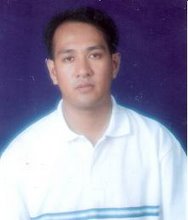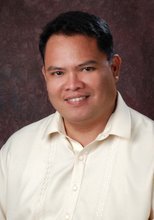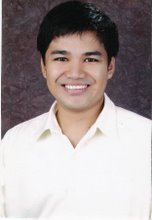by: R.Q. Inocencio
The writing of this meta-analysis was drawn from virtually nominal interpretations of those events in the works of individual political-historians in an unorthodox approach.
The Pre-Spanish government
Prior to the arrival of the Spaniards, the Philippines was composed of settlements or villages, each called barangay or confederation for bigger ones. This was ruled by a chief called datu or rajah, sultan or hadji in others. Society before was divided mainly into three classes, namely the Nobles (maharlikas) or the barangay aristocracy, freemen (timawas) or the middle class Filipino and slaves ( either namamahay or saguiguilid) they occupied the lowest social hierarchy before. One could become a chief by inheritance, wisdom, wealth or physical prowess. The early Filipinos had both written (Maragtas and Kalantiaw codes) and unwritten laws, which had been passed down from one generation to another. However, these laws warrant in-depth study to test not only its veracity but more importantly its very existence.
Government during the Spanish period
It was based on the discovery made by Fernao Magalhaes in 1521, consummated by its conquest by Miguel Lopez de Legazpi forty-five years later and long possession for almost four centuries, until it was terminated in 1898, when by the Treaty of Paris, the Philippines was ceded by Spain to the United States. From 1565 to 1821, the Philippines was indirectly governed by the King of Spain through Mexico. From 1821 to 1898, the county was directly ruled by Spain. The political structure was divided into alcadias, corregidores, ayuntamientos, down to pueblos and cabecerras. The Governor-general and other Spanish officials exercised absolute authority and enjoyed many privileges such as cumplase, indulto de commercio, and tribute. They were benefited because of polo y’ servicio, bandala, encomienda tobacco monopoly and galleon trade. To limit its powers the King of Spain created through Leyes de Indias the Royal Audiencia, Residencia and Visitador.
Governments during the revolutionary era and the First Republic in Asia
The most important achievements during this period were the founding of the Katipunan government of Bonifacio, the Dictatorial to Revolutionary government of Aguinaldo until the establishment of the First Philippine Republic in Malolos, Bulacan after 1898 constitution. The said republic was not recognized by the family of nations but nevertheless its authority was accepted by the Filipinos. This government lasted only for one year as a result of American colonization.
Governments during the American regime to Commonwealth period
America introduced the science of self-governance and improved almost all phases of the human lives of the Filipinos. In the beginning, they established a Military Government with Gen. Wesley Merritt as its first military governor then followed by William Howard Taft’s Civil Government which consequently instituted the Commonwealth Government of the Philippines for a transition period of ten years. This started the republican form under presidential type of government. It pave way to the separation of the Church and State, the check and balance principle in the executive, legislative and judiciary branches and democratization of all government services and functions. This political renaissance produced many illustrious government servants such as Manuel L. Quezon, Jose P. Laurel, Sergio Osmeña, and Manuel Roxas. Two of the most important accomplishments in these 50 years of body politics incubation were the inauguration of Philippine Congress and the approval of the 1935 constitution.
Government during the Japanese occupation and the Second Republic
In year 1942 the country experienced again the dissolution of their collective aspirations of an independent state. The Japanese ended our brief taste of sovereignty when they annexed us for three years under the pretext of regional cooperation. They established the so called Japanese-sponsored government with Jose P. Laurel and Jorge B. Vargas as front liners. Many labeled them as traitors, dissenters still others as fence sitters. To balance the point of views, it is important however, to stress that there were also who believed that they were not conspirators rather heroes for they sacrificed their own lives and principles to protect and save the Philippines. This brutal occupation ended when Japan recapitulated after the Fat Boy and Enola Gay atomic bombs almost destroyed the latter’s everything.
From Independence to Contemporary Philippines
Out of the ashes of World War II emerged the Third Republic with Manuel A. Roxas as its first president, followed by many eminent country leaders such as Elpidio Quirino, Ramon Magsaysay, Carlos P. Garcia, Diosdado Macapagal all carried the postwar problems of the republic. Ferdinand Marcos was the last president of the Third Republic and the first and only president of the Fourth Republic. Under his administration the nation experienced incremental changes and improvements. He became the most undisputed leader in the political arena and the most powerful person in postwar history of the Philippines. (without overstatement) Proving Lord Acton’s wisdom, “Power corrupts, absolute power corrupts absolutely” Marcos declared Martial Law which started his reign of terror. The grand dream of Marcos of a New Society only plunged the country into its worst political and economic crisis. The assassination of Ninoy hastened the growth patriotism which resulted to world acclaimed “People Power”, which unseat the dictator and consequently inducted to the highest office the country’s first female president, Corazon Aquino. Despite the parade of post-martial law problems and being stormed by many coup d’ etas she was able to prove that her transitory government and provisional constitution were fruits of the Filipino’s love for freedom and human dignity. Aquino’s administration was applauded by the international community and admired by her fellow Filipinos for bringing peace and progress in the mainstream once again. (with fear of criticism) Former Presidents Fidel V. Ramos and Joseph Estrada had already left its legacy to the Filipinos. (be it laudable or horrific) To be both sensitive and objective in their achievements as well as controversies, I still stand foursquare, that they accomplished things in humble hope of serving the greater Filipinos. History is yet to weight Gloria Macapagal- Arroyo… her political stewardship in terms of government programs have meant various reactions to various people at different level. Some finds it highly feasible; many doubt its success and find it an abominable list of lies. The future is hard to foresee…Fiat Justicia Ruat Coelum.



No comments:
Post a Comment